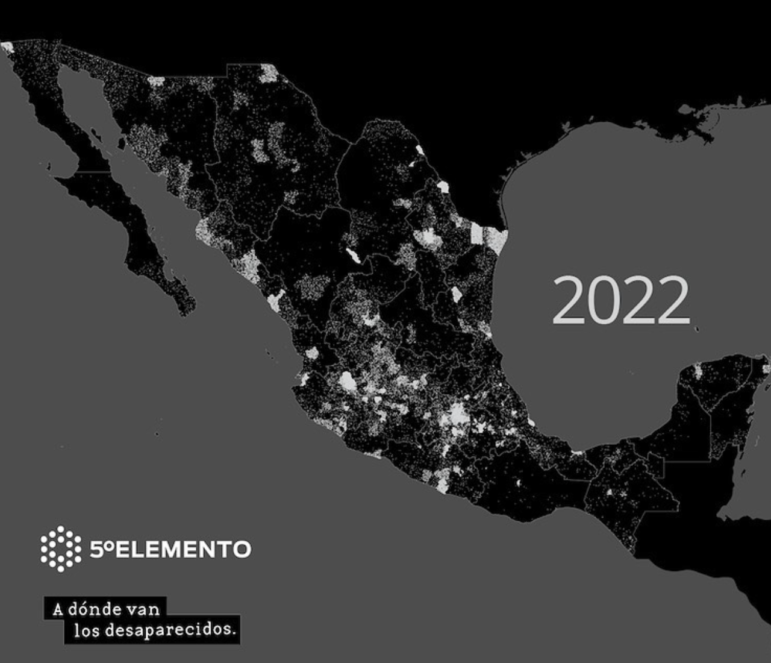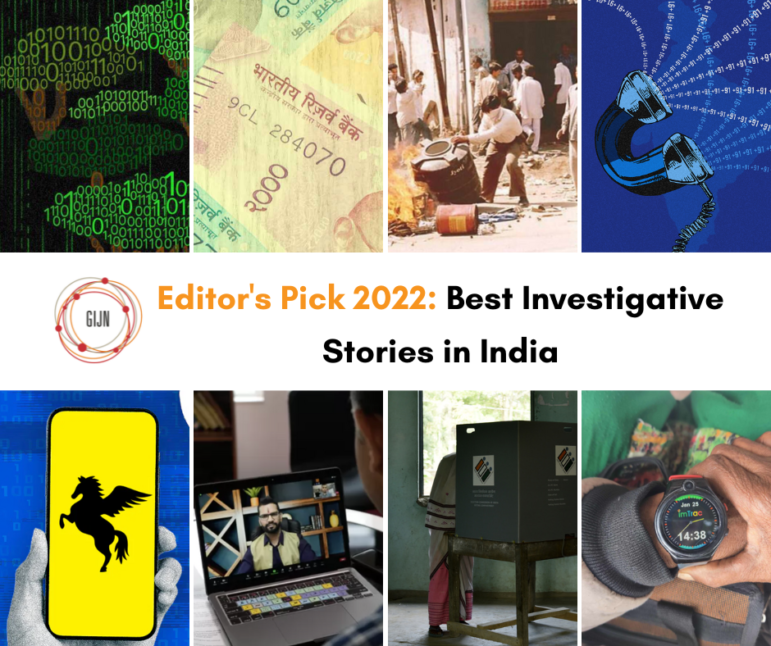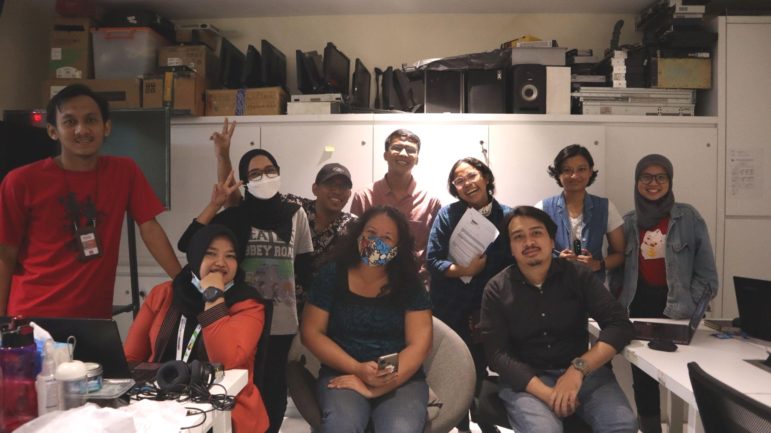

10 Tips for Founding a Successful Investigative Startup
Read this article in

Image: Screenshot
It was not long after sharing a Pulitzer Prize for investigative journalism that Alejandra Xanic, a veteran Mexican journalist, sat down with three of her contemporaries to consider the state of journalism in her country.
The outlook wasn’t promising. “We felt the silence was spreading,” she says. The security situation was worsening, organized crime and corruption were growing, and it was becoming more dangerous to do investigative reporting in border states like Tamaulipas.
Their answer was to create Quinto Elemento Lab (Fifth Element Lab) — a nonprofit laboratory for investigations and innovation that would help support reporters outside the capital in their work. For the first eight months, they had no money, but when their first call for pitches solicited 120 story ideas they knew they were on to something. Xanic’s co-founder Marcela Turati “opened the door” with a series of hard-hitting investigations on clandestine graves and missing people. After an attempt at a rotating directorship, Xanic took the helm.
Over time, Quinto Elemento Lab grew. Today it has a staff of eight who work with a collective of freelance reporters, and the Lab has been supported by 11 different foundations during its existence. Pivoting from reporting to editing, Xanic now takes the time to listen, give advice, and mentor young reporters and editors who want to write and hold those in power to account.
Quinto Elemento’s stories have been shortlisted for the best investigative reporting award at the Latin American Conference of Investigative Journalism (COLPIN), while Turati won the Gabo Award, one of the leading awards in Latin America, for her investigation on clandestine graves. The team also won a SIGMA award for data journalism for an investigation into the underrepresentation of Indigenous people in COVID-19 data in Mexico, and collaborated on the FinCEN files, a 2021 Pulitzer-shortlisted investigation.
Xanic is something of a legend in her home country, but admits the journey has been hard. Growing an organization from seed idea to success story takes time and determination, and being a female director has brought its own challenges, she says.
Alongside the Pulitzer, which she won as part of a New York Times team that investigated how Wal-Mart used bribes to dominate the Mexican market, Xanic was also the recipient of a George Polk Award. Ever modest, she feels grateful for the opportunities that international recognition has brought, but is still a field reporter at heart. You get the sense that she longs for her years spent in the newsrooms and in the field.
Five years into the Quinto Elemento journey — and just a few months after she handed over leadership of the site to journalist Armando Talamantes — Xanic shared the lessons learned so far, and offered the following tips for others working in small investigative startups.

Quinto Elemento Labs’ “The Way to Finding Them” is a series of written reports and podcasts dedicated to recounting different methods of searching for disappeared persons in Mexico. Image: Screenshot
- Hire an administrator. Xanic recognizes that many investigative outlets are set up, and staffed, by reporters with a passion for stories rather than management. Hiring a professional administrator, she says, should be the first step. “Getting this wrong was almost mortal for Quinto Elemento Lab — we almost had to shut the door,” she recalls. “Also, be mindful of how you hire. This has to do with HR. How do you recruit people? How do you do interviews, check references, and determine what are good qualities? How do you test honesty and ability? As reporters, you might think this is less important, but it’s fundamental.”
- Know the system. “Be curious about the law and regulatory atmosphere, and aware that it’s always changing,” she advises. “In Mexico, for example, there are moves to try and ban foreign donations for nonprofits. Ask others in the field: What are you doing in El Salvador, Guatemala, or Nicaragua? Did you find money somewhere else?”
- Check your model. When the team behind Quinto Elemento Lab first laid out their plans for the project, there was no one else in the field doing similar work. But after five years, the landscape has changed. “What we realized two years ago is there are more organizations doing what we do — not outlets publishing their own stories, but generating content. More people out there offering quality work means now we have competition on the ground.” Xanic adds: “It’s important to reflect on what is your added value. How can you improve or further the reach and impact? Are there things you must change in the ecosystem?”
- Consider your funding strategy. “The investigative journalism work we do will rely for some time on foundations and grants. But what if the focus there is shifting?” she warns. “Inequality after COVID-19 has been a big issue, but we don’t know how long these foundations will stay focused on supporting democracy and freedom of the press.” Given how expensive investigative journalism can be to fund, she suspects a subscriber model wouldn’t work well either. “At the moment, with a subscription model, there’s no way you could fund what we do.”
- Plan for how you will share your content. When Xanic and her colleagues started Quinto Elemento Lab, they had no marketing and no branding, following instead the ‘ProPublica model’ of sharing their content for free. “At the very beginning, it made sense — offer high quality, thorough, and reliable material at no cost,” she explains. “And we are the ones who can be sued for the stories. This way opened a space for our work, and secondly, we were helping startups around the country with good material that they could not afford themselves.” She says the team is now considering whether this works in the long term. “Now, we feel we might have to change the model, from free to a donation,” she says. “We don’t know how much to charge, how much a partner can pay. Will our editorial process change in some way? Would the media outlets have a say in the angle or not? We are now asking those questions.”

- Draw up an organizational chart. “We began as friends — you don’t want a chart,” she says. “But people need to know: ‘Who do I report to?’ The director needs to know: ‘Where is everybody? Are they doing things that are consistent with our core?’ That’s the hard part. You have to go from independent and liberal to structured and ordered. You don’t want a position [that is only] for a founding member, but a position that can be filled by anyone.” Be crystal clear, she says, on who does what.
- Be transparent. Because investigative journalism outlets are themselves holding others to account, openness on funding and supporters is also vital. “Funders — and the public — are very interested in transparency, in what happens with the money we receive and what we do,” she says. “Transparency is very important, and checks and balances are very important.”
- Value, and reward, your staff. Despite limited budgets, Xanic notes that outlets need to attract leading reporters to grow and make a name for themselves. “We have to be competitive and keep the talent, and pay fair salaries. We also try to be compensatory with holidays.” A final perk that nonprofits can offer within a tight budget: “Training programs for people to pick up new skills as they’re needed.”
- Work as a team. On Quinto Elemento Lab’s biggest investigations, the team has split a project so that multiple reporters are working on the story, each bringing their own expertise. “We have someone doing the data, someone doing FOIA.” Reporting on the ground is also vital, she says, although the security situation in Mexico adds a complicating dimension. “The decision to send someone to report on the ground is very, very hard. Some stories have taken a long time because we are not sure it’s a good time to go to the provinces. But trusting that your editor will put your safety first, rather than the story, keeps reporters interested.”
- Prioritize survival, but also consider growth. “For a long time our policy was very austere — we had a very small and probably a little bit of an ugly office!” she says. “Everyone used their own personal computers.” As founders, they worked hard — too hard, she admits. But recognizing the right moment to grow is vital. “Now we think the way to make it sustainable is to grow the team,” she says. “You need another mindset for growth. Growing is another very perilous step: Can you bring on another two people, or is that a death sentence? What do you need in your work? What grants need to be in place before you can think about growth? You need someone who knows more about administration and numbers. It’s a very scary phase.”
These tips were adapted from a meet-up of GIJN Women, a group for discussing issues related to women and non binary investigative journalists.Additional Resources
How Quinto Elemento Trains Mexico’s New Generation of Muckrakers
The 5th Element: A Mexican Investigative Reporting Lab
GIJN Resource Center: Sustainability
 Laura Dixon is an associate editor at GIJN and a British freelance journalist. She joined GIJN after four years reporting from Colombia, and previous freelance stints in Paris and Austin, Texas.
Laura Dixon is an associate editor at GIJN and a British freelance journalist. She joined GIJN after four years reporting from Colombia, and previous freelance stints in Paris and Austin, Texas. Andrea Arzaba is GIJN’s Spanish Editor. As a journalist and media
 professional, Andrea has dedicated her life to documenting the stories of people in Latin America and Latinx communities in the United States.
professional, Andrea has dedicated her life to documenting the stories of people in Latin America and Latinx communities in the United States.












